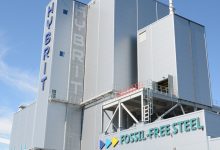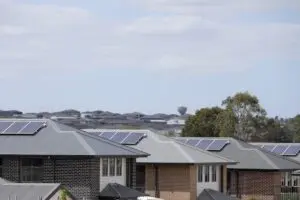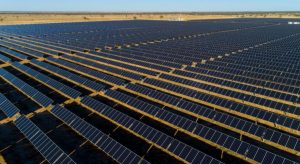“We have to be brave.”
It’s Day 6 at the UN-hosted COP27 climate conference in Egypt – halfway through the conference, and the official theme of the day is decarbonisation.
And there’s been plenty of discussion throughout the hundreds of stands and pavilions at COP27 over the week about how we will deal with the more complex tasks of decarbonising the world’s hard-to-abate sectors.
A recurring theme is that we cannot wait; not for costs to come down nor for the risks to be lowered by others moving first. It’s time to ‘do’. Or, as the Egyptian President said in his opening remarks this week, “implementation, implementation, implementation”.
One can forgive investors pausing for thought on an outlay of US$30 billion, which is the ballpark cost of a new green ammonia production plant that CWP Global (the same company behind the Asian Renewable Energy Hub and the Western Green Energy Hub in Western Australia) is vigorously pursuing in Mauritania in west Africa.
The company aims to play a key role in decarbonising shipping, which accounts for 3 per cent of the world’s emissions today.
But the CEO of CWP Global, Alex Hewitt, told a group gathered in the Danish pavilion yesterday that “we just have to get going”.
“Call it a leap of faith – the market is going to be there. It has to be there. By 2030, there is going to be a gross undersupply of green ammonia, a gross undersupply of green hydrogen.
Yes, they are a more expensive option now, and a carbon price would be helpful. Regulation would be helpful. But we can’t wait for those things. The market is going to be there, and we just have to be brave.”
The same sentiments were repeated over in the Swedish pavilion where the head of corporate sustainability for Vattenfall (a Swedish multinational power company), Annika Ramsköld, told a forum on ‘fossil-free steel’ that “there’ll be those who say you can’t do it – the premium is too high.
“But I say, if you don’t do it, you’ll be obsolete in a few years time,”.
She was referring to the spirit that drove Vattenfall to partner with Swedish steelmaker, SSAB, on the world’s first pilot green steel plant (replacing coking coal with renewable hydrogen in the iron ore reduction process).
The trial has been an outstanding success, and the green steel has turned out to be of higher quality than the coal-based product. Buyers like Volvo want more of it, and SSAB is now set to build the world’s first commercial-scale green hydrogen steel plant by 2026.
By 2030, the company intends to close down its traditional blast furnaces altogether, and Swedish emissions will fall 10 per cent as a result.
None of these leaders doubts that they’ll be able to access finance for these capital-intensive projects – institutional investors are tripping over themselves to get their hands on high- quality investments in long-life green assets.
Indeed, the bigger problem is that there are too few to go around.
So now it’s simply a question of how fast industry can bring their decarbonisation projects to market.
And all that will take is some courage.
Anna Freeman is head of policy at the Clean Energy Council and is attending COP27.










